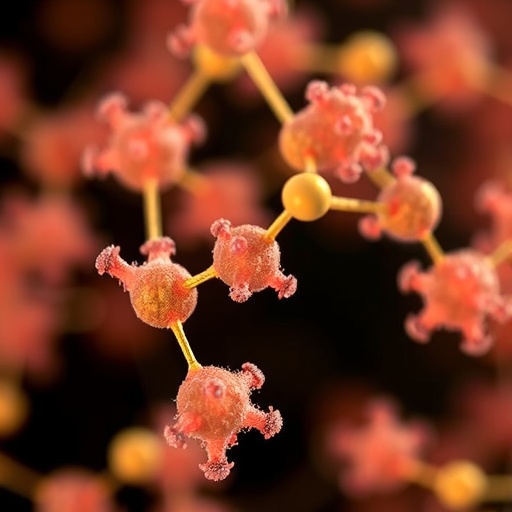Madrid, Spain, 14 June 2017: The results of a study presented today at the Annual European Congress of Rheumatology (EULAR) 2017 press conference showed that, in postmenopausal women with osteoporosis, 12 months treatment with romosozumab was associated with rapid and large reductions in their risk of a vertebral fracture compared to placebo.
In those women receiving romosozumab, all clinical vertebral fractures occurred in the first two months of treatment; overall, the risk of a vertebral fracture was more than five times greater in the group of women given placebo.
"These results support this new class of drug as a highly effective treatment for postmenopausal women with osteoporosis with established bone mineral density (BMD) deficit who are at increased risk of fracture," said Professor Piet Geusens lead author from Maastricht University, The Netherlands. "The rapid and large reduction in clinical vertebral fracture risk is an important and highly relevant clinical outcome," he added.
Romosozumab is a monoclonal antibody that binds and inhibits sclerostin (a glycoprotein produced by bone cells). This action has the dual effect of increasing bone formation and decreasing bone resorption, resulting in significant increases in BMD. Previous studies have shown that romosozumab, administered subcutaneously at monthly intervals over a period of 12 months, resulted in gains in both the trabecular and cortical compartments of the spine and hip regions.
The Fracture Study in Postmenopausal Women with Osteoporosis (FRAME) is an international, randomised, double-blind, placebo-controlled, parallel-group trial. FRAME enrolled 7,180 postmenopausal women, 55-85 years old, with evidence of osteoporosis confirmed by abnormally low bone density scores in their spine, hip, and femoral neck, but no severe vertebral fracture. Patients received monthly romosozumab (n=3,589) or placebo (n=3,591) for 12 months.
Initial results from FRAME had shown romosozumab was associated with a lower risk of new vertebral fractures than placebo at 12 months. The effect of romosozumab on the risk of vertebral fracture was rapid, with only 2 additional vertebral fractures (of a total of 16 such fractures in the romosozumab group) occurring in the second 6 months of therapy.
These new data from FRAME focussed on the incidence of clinical vertebral fracture in those women in the study who developed back pain consistent with this diagnosis. Monthly study visits in FRAME enabled timely X-ray confirmation of any suspected clinical vertebral fracture.
Of those 119 women reporting back pain over 12 months, 20 were diagnosed with a new or worsening vertebral fracture. In the romosozumab group, there were 3 clinical vertebral fractures (
Postmenopausal osteoporosis is considered a serious public health concern due to its high prevalence worldwide. Approximately 30% of all postmenopausal women have osteoporosis in Europe and the US; at least 40% of these women will go on to sustain one or more fragility fractures in their lifetime.
The most common fractures associated with postmenopausal osteoporosis occur at the hip, spine and wrist. Of particular concern are vertebral (spinal) and hip fractures. Vertebral fractures can result in intense back pain and deformity.
###
Abstract Number: OP0048
NOTES TO EDITORS:
For further information on this study, or to request an interview with the study lead, please do not hesitate to contact the EULAR congress Press Office in the Goya Room at the IFEMA, Madrid during EULAR 2017 or on:
Email: [email protected]
Onsite tel: +44 (0)7786 171 476 / +34 91722 3115
Twitter: @EULAR_Press
Youtube: Eular Press Office
About Rheumatic and Musculoskeletal Diseases
Rheumatic and musculoskeletal diseases (RMDs) are a diverse group of diseases that commonly affect the joints, but can also affect the muscles, other tissues and internal organs. There are more than 200 different RMDs, affecting both children and adults. They are usually caused by problems of the immune system, inflammation, infections or gradual deterioration of joints, muscle and bones. Many of these diseases are long term and worsen over time. They are typically painful and Iimit function. In severe cases, RMDs can result in significant disability, having a major impact on both quality of life and life expectancy.
About 'Don't Delay, Connect Today!'
'Don't Delay, Connect Today!' is a EULAR initiative that unites the voices of its three pillars, patient (PARE) organisations, scientific member societies and health professional associations – as well as its international network – with the goal of highlighting the importance of early diagnosis and access to treatment. In Europe alone, over 120 million people are currently living with a rheumatic disease (RMD), with many cases undetected. The 'Don't Delay, Connect Today' campaign aims to highlight that early diagnosis of RMDs and access to treatment can prevent further damage, and also reduce the burden on individual life and society as a whole.
About EULAR
The European League Against Rheumatism (EULAR) is an umbrella organisation which represents scientific societies, health professional associations and organisations for people with rheumatic and musculoskeletal diseases throughout Europe. EULAR aims to reduce the burden of rheumatic and musculoskeletal diseases on individuals and society and to improve the treatment, prevention and rehabilitation of rheumatic and musculoskeletal diseases. To this end, EULAR fosters excellence in education and research in the field of rheumatology. It promotes the translation of research advances into daily care and fights for the recognition of the needs of people with musculoskeletal diseases by the governing bodies in Europe through advocacy action.
To find out more about the activities of EULAR, visit: http://www.eular.org
Media Contact
EULAR Press Office
[email protected]
34-917-223-115
@eular_org
http://www.eular.org
https://www.eular.org/congresspressreleases/New_class_of_drug_significantly_reduces_spine_fracture_risk_in_postmenopausal_women_with_osteoporosis__OP0048.pdf
############
Story Source: Materials provided by Scienmag




